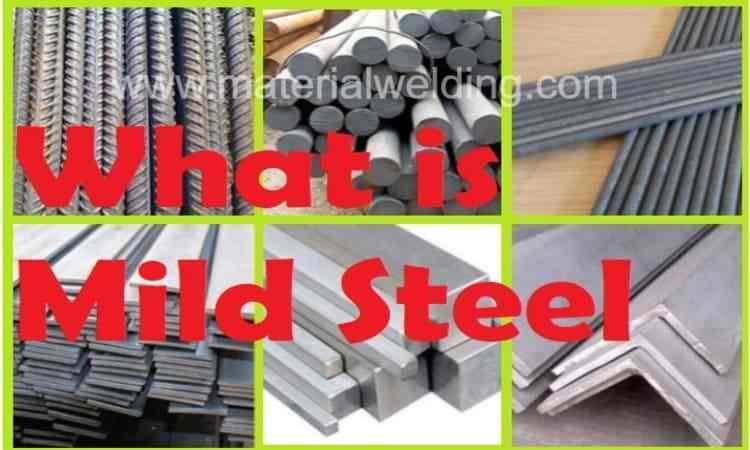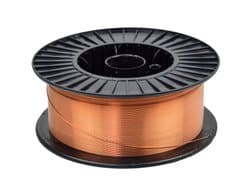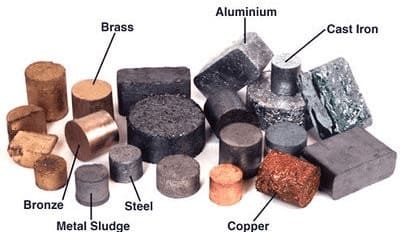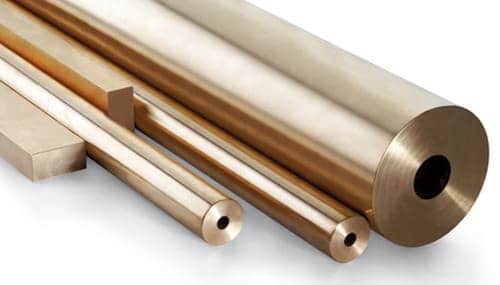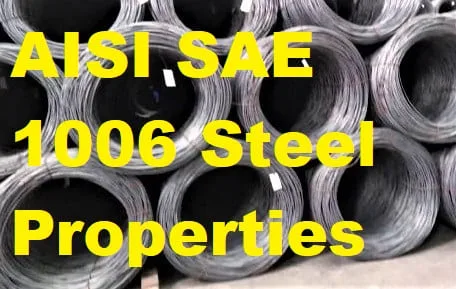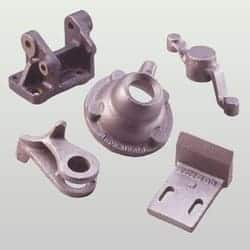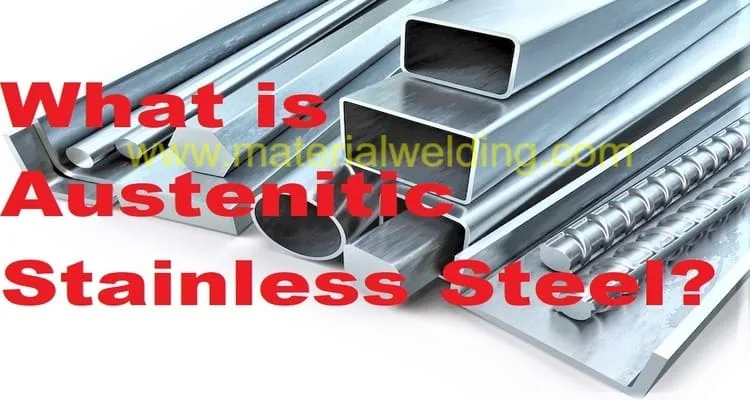How is steel made? In order to answer that question, one must first understand what steel is. Steel came from a German work Stal, stahel that means ‘Solid’ or ‘Hard’.
Steel is an alloy of mainly iron and carbon, and other inherent elements found in iron ore such as silicon, magnesium, sulfur and phosphorus.
Steel making is the process of removing impurities (e.g., sulfur, Phosphorus) from iron ore and controlling, reducing and additions of the other alloying elements to refined steel to meet various mechanical & technological properties. Alloying iron with carbon is the only way to make it harder and stronger than iron.
How is Steel Made: Steps of making steel
The process of making steel involves four steps:
- Mining iron ore,
- Ore Dressing: Crushing and washing the ore,
- Ore Reduction: Smelting the ore in a blast furnace, and
- Refining: using a basic oxygen furnace (BOF).
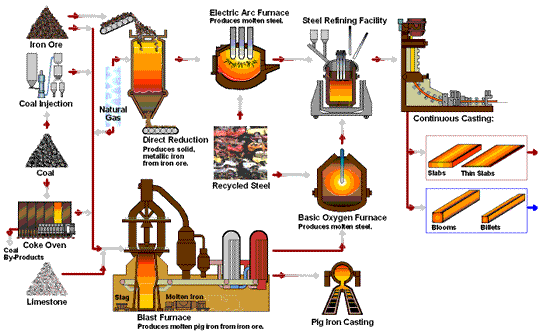
Mining Iron Ore
Mining iron ore is a high-volume, low-cost activity, which is the key driver of steel production. However, it can also be highly energy intensive, and therefore expensive.
The main raw material for steel production is iron ore sourced from Australia, Brazil, India, Russia and South Africa.
In order to produce steel from iron ore, the rock containing the iron ore must be heated to extremely high temperatures in a blast furnace.
This process releases large amounts of carbon dioxide and other pollutants into the atmosphere. In order to offset these emissions, the steel industry has developed strategies to reduce its environmental impact.
Types of Iron Ores
Iron is not found in pure form on earth like gold or silver and occurs in a chemically bound form of Iron-oxygen compound known as Gangue.
There are four main types of iron ore deposits that are worked for the production of iron and steel. The main ores are usually found in the form of
- hematite (Fe2O3),
- magnetite (Fe3O4),
- goethite/ Limonite (FeOOH ) and
- siderite (FeCO3).
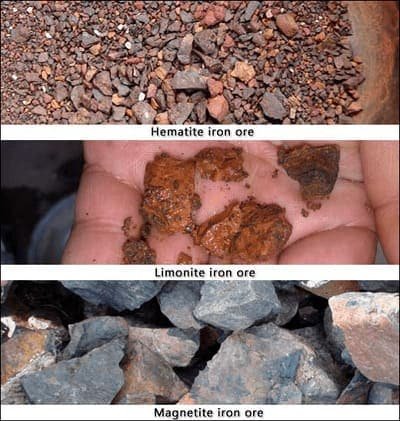
These ores vary in their composition, but all contain a high percentage of iron oxides. The most important factor for the industrial production of iron is the presence of a suitable supply of coking coal. This is used to produce coke, which is necessary for the blast furnace process.
Iron Ore Dressing
The process of steelmaking starts with the mining of iron ore. Iron ore is mined from the earth, then crushed and separated from other minerals.
In the crushing of iron ore, the iron rich particles (magnetic) are separated from the gangue (non-magnetic particles) in sintering plant using magnetic separators as shown in below process.
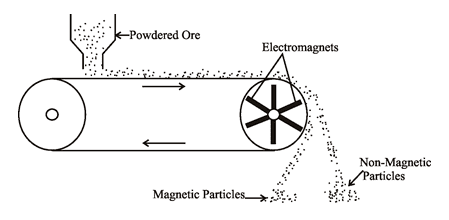
The separation of iron from non-iron is done by a process called magnetic separation. This process uses a magnet to separate the iron rich particles from the gangue.
Ore Reduction
In order to create steel, iron ore must be reduced. This can be done in a number of ways, but the most common method is through the use of a blast furnace.
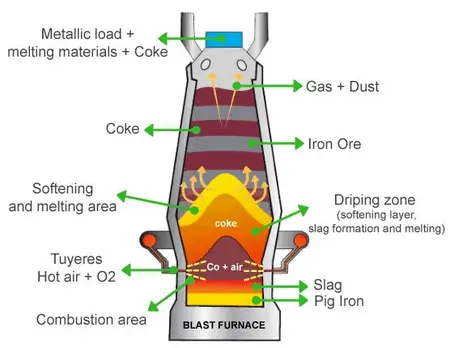
The blast furnace is filled with iron ore, coke (a form of carbon), and limestone. The iron ore is heated to such a high temperature that it melts and reacts with the coke and limestone to form slag and pig iron.
The process of reducing iron ore is not as simple as it may seem. In order to achieve the high temperatures needed for reduction, various chemicals and processes must be used. The end result is steel, which has a variety of uses thanks to its strength and versatility.
Pig Iron: Blast Furnace Product
Pig iron is made from iron ore that is melted in a blast furnace. The molten iron is then poured into molds called pigs, where it cools and solidifies. Once it has solidified, the pig iron can be used to make steel.
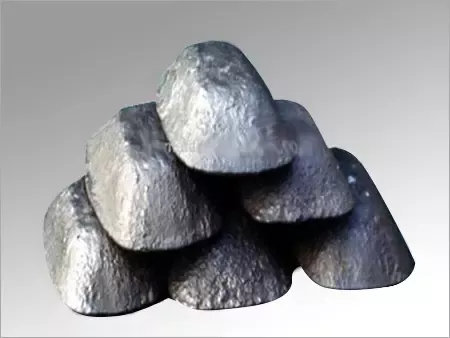
The chemical compositions of the pig iron are:
- Carbon: 4.0- 5.0%
- Silicon: 0.2-3.0%
- Manganese: 0.2-6.0%
- Sulfur: 0.1-2.0%
- Phosphorus: 0.01- 0.06%
To make steel from pig iron, the pig iron is heated in a furnace with carbon. The carbon reacts with the oxygen in the pig iron to create carbon dioxide, which escapes as a gas. This leaves behind a purer form of iron, which can be used to make steel.
Refining of Steel: Final step of steel making in Steel Plant
The process of refining steel has been refined over the years to become more efficient and produce a higher quality product.
After blast furnace, the next step is to minimize carbon, silicon, manganese, sulfur and phosphorus content within a useable range.
This is done by adding oxygen to the steel in an electric arc furnace (most widely used steel refining furnace worldwide). The final step is to add alloying elements to the steel to create different grades of steel.
Electric Arc Furnace
The steelmaking process begins in an electric arc furnace. Melted scrap steel, sponge iron and pig iron are poured into the furnace as charging material and heated to about 6332°F (3500°C). This high temperature melts the metal, allowing it to be poured into molds.
A schematic of Electric arc furnace is given in the below diagram. On left side, Electric arc furnace working is given and on right side, an example of continuous casting process for making steel is given.
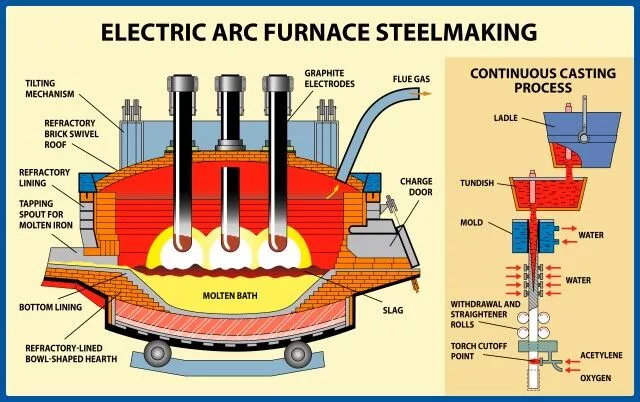
Burning of ore supplies oxygen, external oxygen is supplied using oxygen lances.
The intense heat of the electric arc furnace also burns away impurities like carbon and silicon from the raw materials.
These impurities can make the final product weaker, so removing them is crucial. The end result is a strong, durable steel that can be used for everything from construction to manufacturing vehicles.
Advantages of Electric Arc Furnace in Steel Making
An electric arc furnace is a type of furnace that uses electricity to heat up its metal charge for steel making. It is the most common type of furnace used in the steel industry today.
Here are five important advantages of electric arc furnaces:
- They are very energy efficient.
- They can reach very high temperatures, making them ideal for melting and refining metals.
- They are less polluting than other types of furnaces, such as blast furnaces.
- They are less expensive to operate than other types of furnaces.
- They can be automated, making them easier to operate than manual furnaces.
